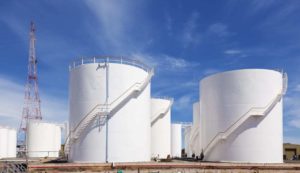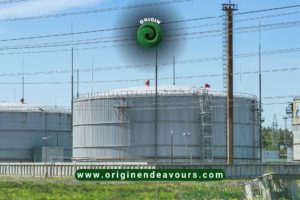Table of Contents
In the world of industry, above ground storage tank (AST) play a vital role in storing various liquids, from chemicals to petroleum products. Ensuring the integrity and safety of these ASTs is crucial to prevent environmental disasters and protect investments. In this article, we will dive deep into the world of AST inspection, offering a comprehensive guide on what to look for. From top-level keywords to actionable steps, we’ll cover it all.
Why Above Ground Storage Tank Inspection Matters

Before we delve into the specifics of AST inspections, let’s understand why they are crucial. ASTs are widespread in industries such as oil and gas, chemicals, and agriculture, and their proper functioning is vital for a variety of reasons.
Regular inspections help prevent leaks, corrosion, and environmental contamination. Here’s a look at what you should consider during an inspection:
1. Visual Inspection
Start with a visual examination of the tank. Look for any signs of corrosion, dents, or leaks on the surface.

A well-executed visual inspection is the first line of defence in maintaining the integrity of an above ground storage tank (AST). Walk around the tank and closely examine its exterior for any noticeable defects or irregularities. Pay particular attention to the following:
- Corrosion: Look for signs of rust, flaking paint, or other indications of corrosion. This could signal potential weak points in the tank’s structure.
- Dents or Damage: Inspect the tank’s surface for any dents, punctures, or impact damage. These can compromise the tank’s integrity.
- Seams and Welds: Examine the seams and welds for signs of stress, cracks, or leakage. These are critical areas that require close scrutiny.
2. Ultrasonic Testing
Utilize ultrasonic technology to check for hidden corrosion or thinning of the tank walls. This non-destructive method is highly effective.
Ultrasonic testing is a sophisticated method that can reveal issues not visible to the naked eye. It involves using high-frequency sound waves to inspect the thickness of the tank’s walls. By measuring the time it takes for sound waves to bounce back, technicians can identify areas of potential thinning or corrosion. This valuable technique helps assess the structural integrity of the tank and can prevent catastrophic failures.
3. Leak Detection
Employ advanced leak detection methods, such as helium testing, to identify even the smallest leaks in the tank.
Leaks in an AST can have serious consequences, including environmental contamination and financial losses. Helium testing is a highly sensitive method for detecting leaks. It involves pressurizing the tank with helium and then using specialized equipment to detect any helium escaping from the tank. Even the smallest leaks can be identified, allowing for prompt repairs.
4. Foundation Assessment
Ensure the tank’s foundation is stable. Settling or shifting can lead to structural issues and leaks.
The tank’s foundation is its support system, and any instability can result in structural problems. It’s crucial to regularly assess the foundation for signs of settling, cracking, or shifting. Address any issues promptly to prevent potential leaks or structural damage.
5. Safety Features
Inspect safety mechanisms, such as pressure relief valves and emergency vents, to ensure they are in working order.
Safety features on an AST are critical for preventing overpressure and maintaining safe operation. Ensure that pressure relief valves, emergency vents, and other safety mechanisms are regularly inspected and in proper working condition. This can prevent dangerous pressure build-up and protect the tank from catastrophic failure.
Long-Term Maintenance for Storage Tank
AST inspections are not one-time affairs. To maintain the tank’s integrity over time, consider the following steps:
1. Regularity is Key
Schedule routine inspections, as the frequency of inspections varies based on the type of liquid stored and the tank’s age.

The frequency of inspections depends on several factors, including the type of liquid stored, the tank’s age, and local regulations. It’s essential to establish a regular inspection schedule and adhere to it. Consult with experts in your industry to determine the optimal inspection frequency for your specific ASTs.
2. Coating Maintenance
Maintain protective coatings to prevent corrosion. Regularly check and reapply coatings as needed.
Protective coatings are the first line of defense against corrosion on an AST. Regularly inspect these coatings for signs of wear or damage, and reapply them as necessary. This maintenance can significantly extend the life of the tank and reduce the risk of leaks.
3. Environmental Protection
Implement spill containment measures and have an emergency response plan in place to minimize environmental damage in case of a leak.
Environmental protection is a critical aspect of AST maintenance. Implement spill containment measures around the tank to prevent leaks from spreading and causing environmental harm. Additionally, have a well-defined emergency response plan in place to address any leaks promptly and minimize damage.
4. Documentation
Keep detailed records of inspections, repairs, and maintenance. Proper documentation is essential for compliance and liability reasons.
Accurate documentation is crucial for compliance with industry regulations and for liability protection. Maintain detailed records of all inspections, repairs, and maintenance activities. This documentation can serve as evidence of your commitment to safety and environmental responsibility.
Takeaways
At Origin Endeavours, we understand that above ground storage tank inspection is an intricate process with a significant impact on safety and the environment. Regular inspections, advanced testing methods, and proper maintenance are key to preventing disasters and ensuring the longevity of your Above Ground Storage Tank. By following these guidelines and partnering with us, you can safeguard your investment, protect the world around you, and ensure the continued success of your business.





